RESEARCH
Cleaning against the Dictatorship of EfficiencyIn 2019 conducted we conducted a research as part of our artist-in-residence at the Villa Kamogawa, Goethe Institut Japan, where we explored Japanese cleaning culture as well as its related crafts.
Based on our observations and experiments we developed a theory about cleaning as a mindful act promoting a wholistic world view reconnecting us with nature.
___detailed informations on our dedicated research blog
___resulting project KIREI
CLEANING
_BODY & MIND
Cleaning one's body does not only remove dirt, but it also reduces residues of the past - like the feeling of guilt or doubts about past decisions. It, therefore, is part of many religious practices.

miko, shrine maidens, participating in a cleansing performance
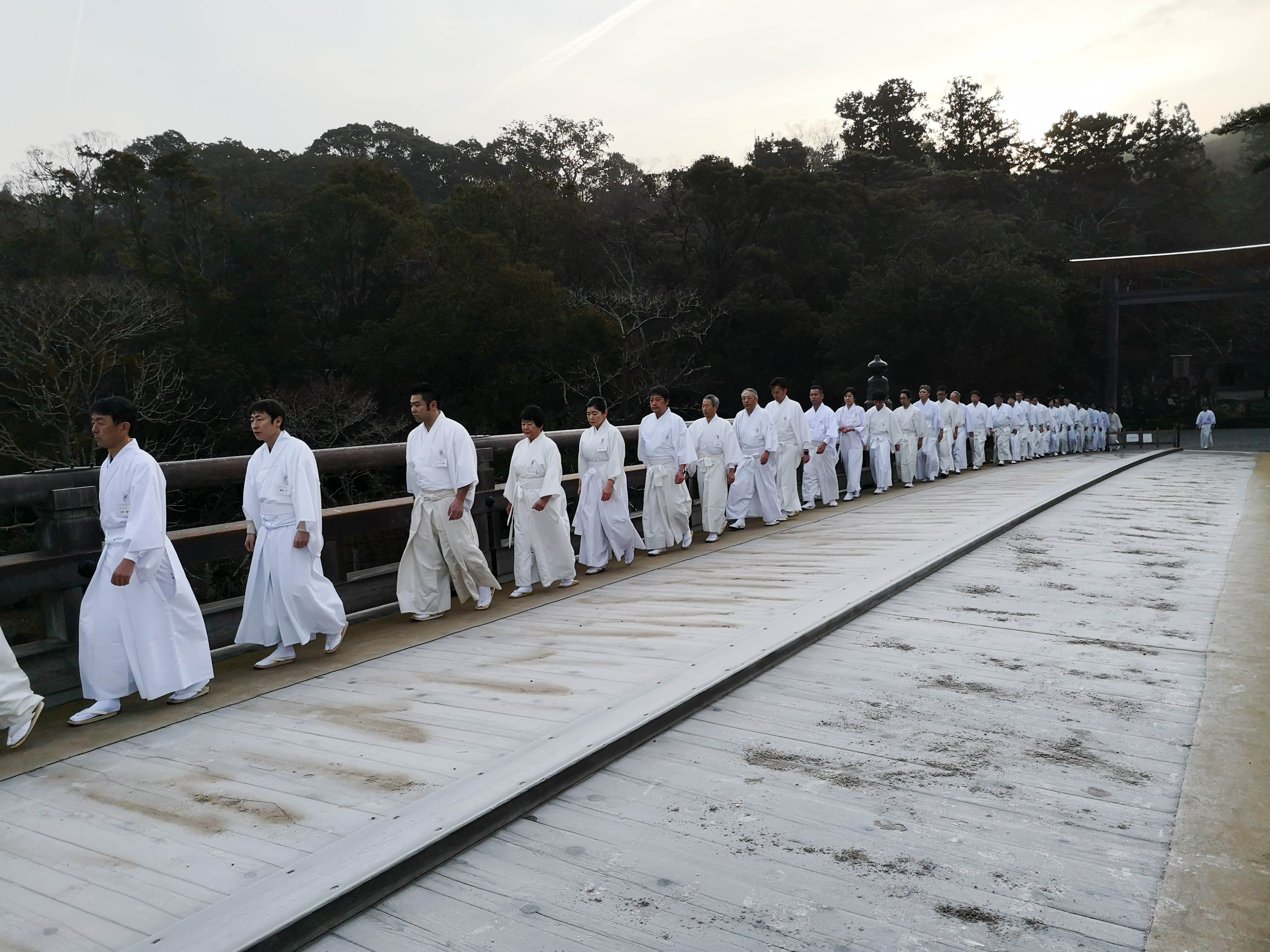
kannushi, people responsible for the maintenance of a Shinto shrine, crossing the Uji Bridge

bottom right: Torii, sacred shinto entrance gate, at the entrance of Naikū
Buddist and Shintoist monks start their day with cleaning. Just as meditation it is considered an important training to bring once full attention to the present moment.
_THE HOME
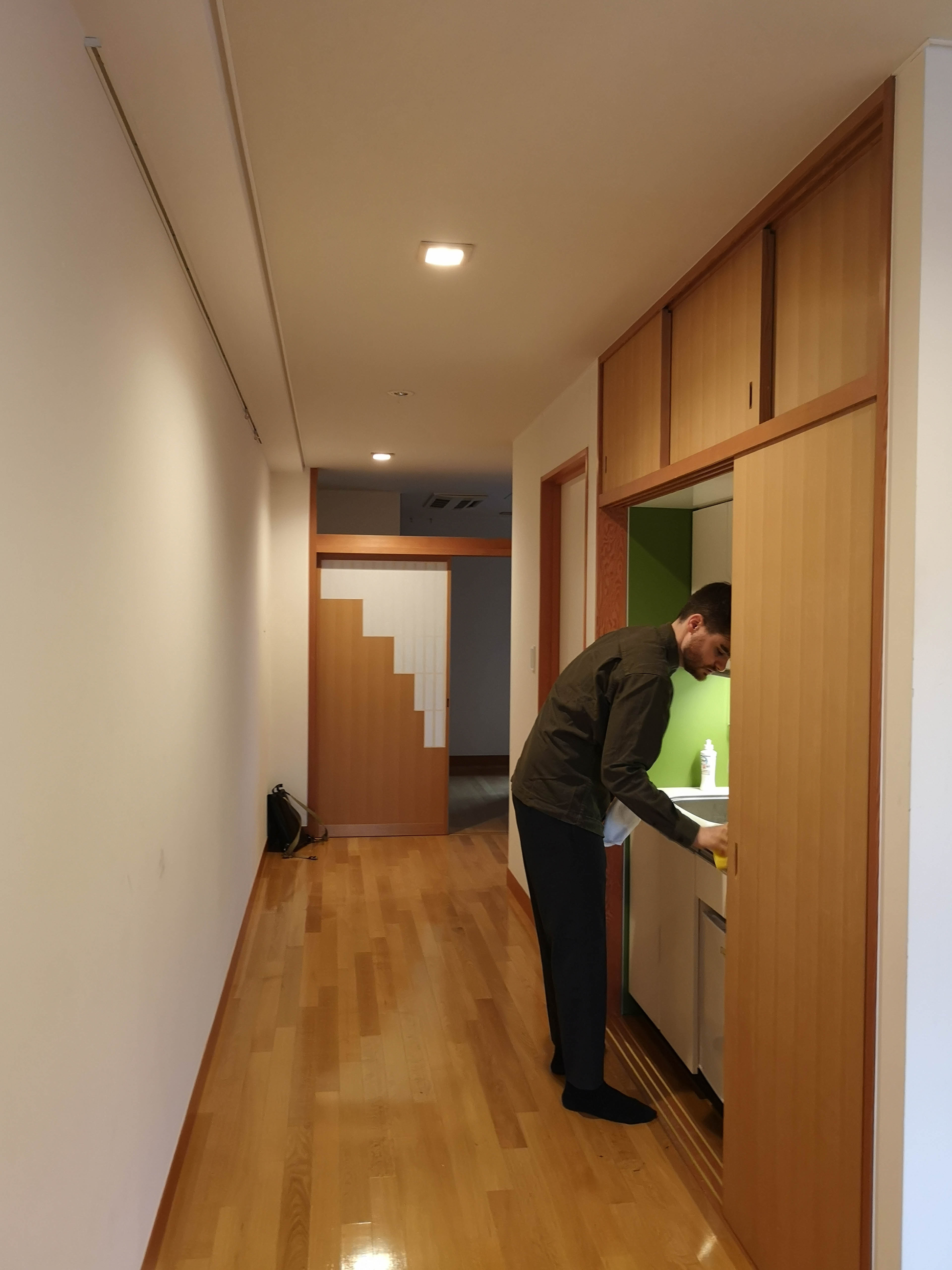
Guillaume cleaning the apartment at the Villa Kamogawa, Goethe Institut Japan
Cleaning, performed as routine practice for a several minutes per day, does promote mental well being and feelings of happiness.
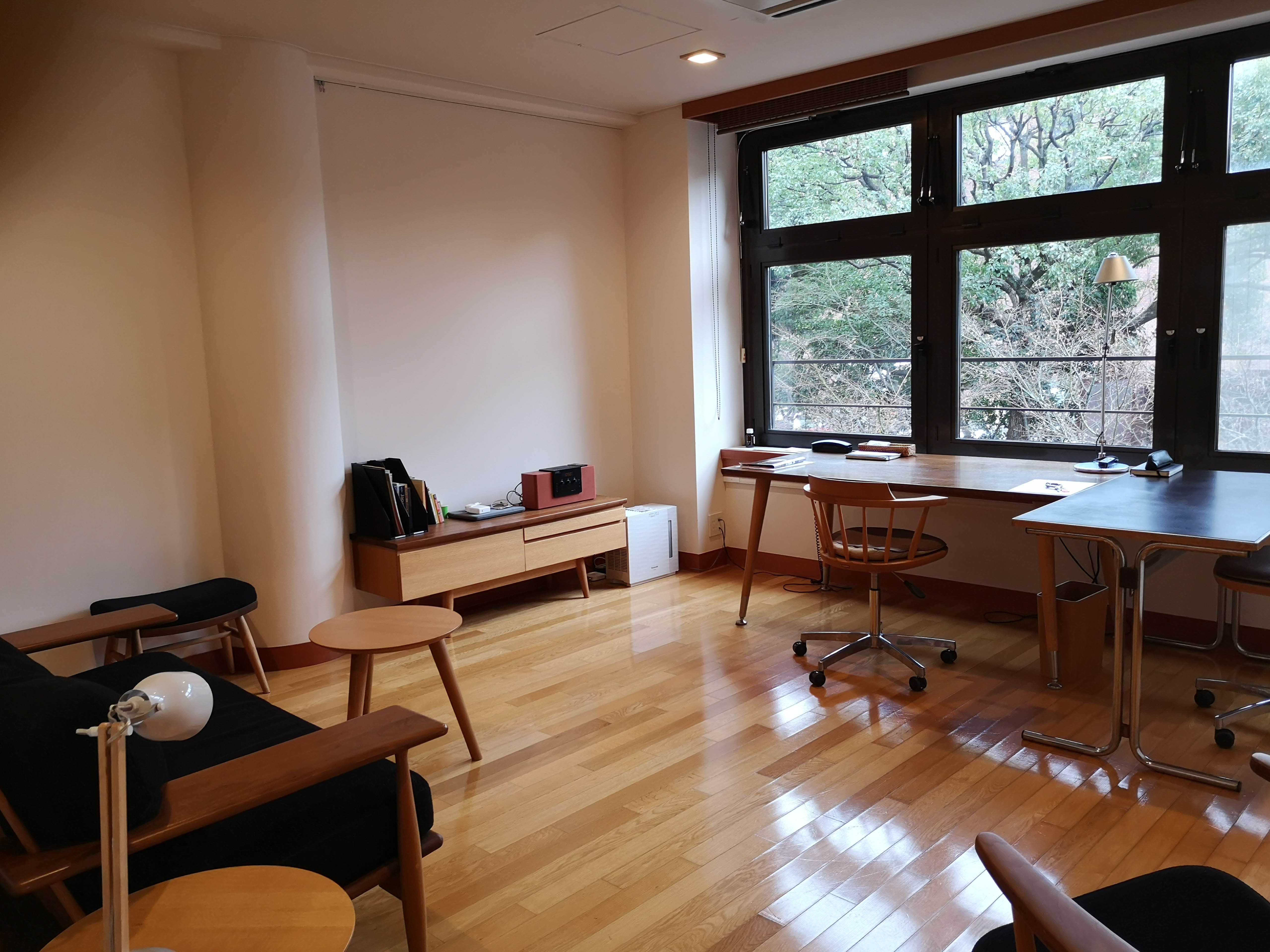
apartment at the Villa Kamogawa, Goethe Institut Japan
Engaging regularly with objects and space through cleaning improve mental representations of one's direct surrounding. Awareness of possessions reduces impulse buying and induces feelings of control.
_ENVIRONMENT - URBAN
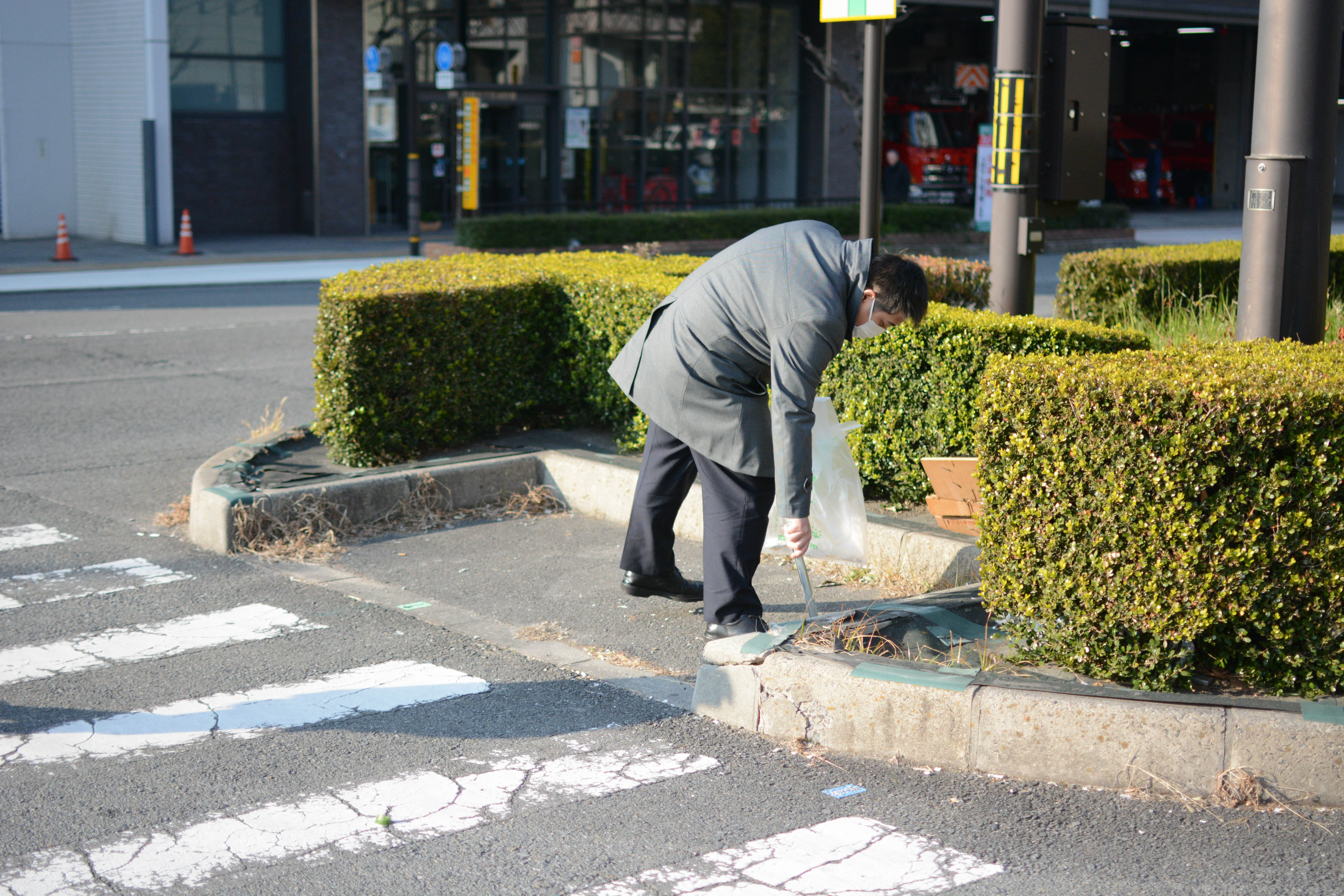
Employees of company “Ueda Honsha” cleaning in the streets around their office building

Employees of company “Ueda Honsha” cleaning outside
Cleaning is a mediator of relationships. It is an expression of respect towards oneself, others and the environment.
In Japan most people, regardless of rank or position, start their working day with cleaning inside or outside the (office) building.

self-organized neighborhood cleaning in Neukölln
Caring for one's direct surroundings promotes feelings of belonging and community. It is an expression of helpfulness and consideration.
_ENVIRONMENT - NATURE
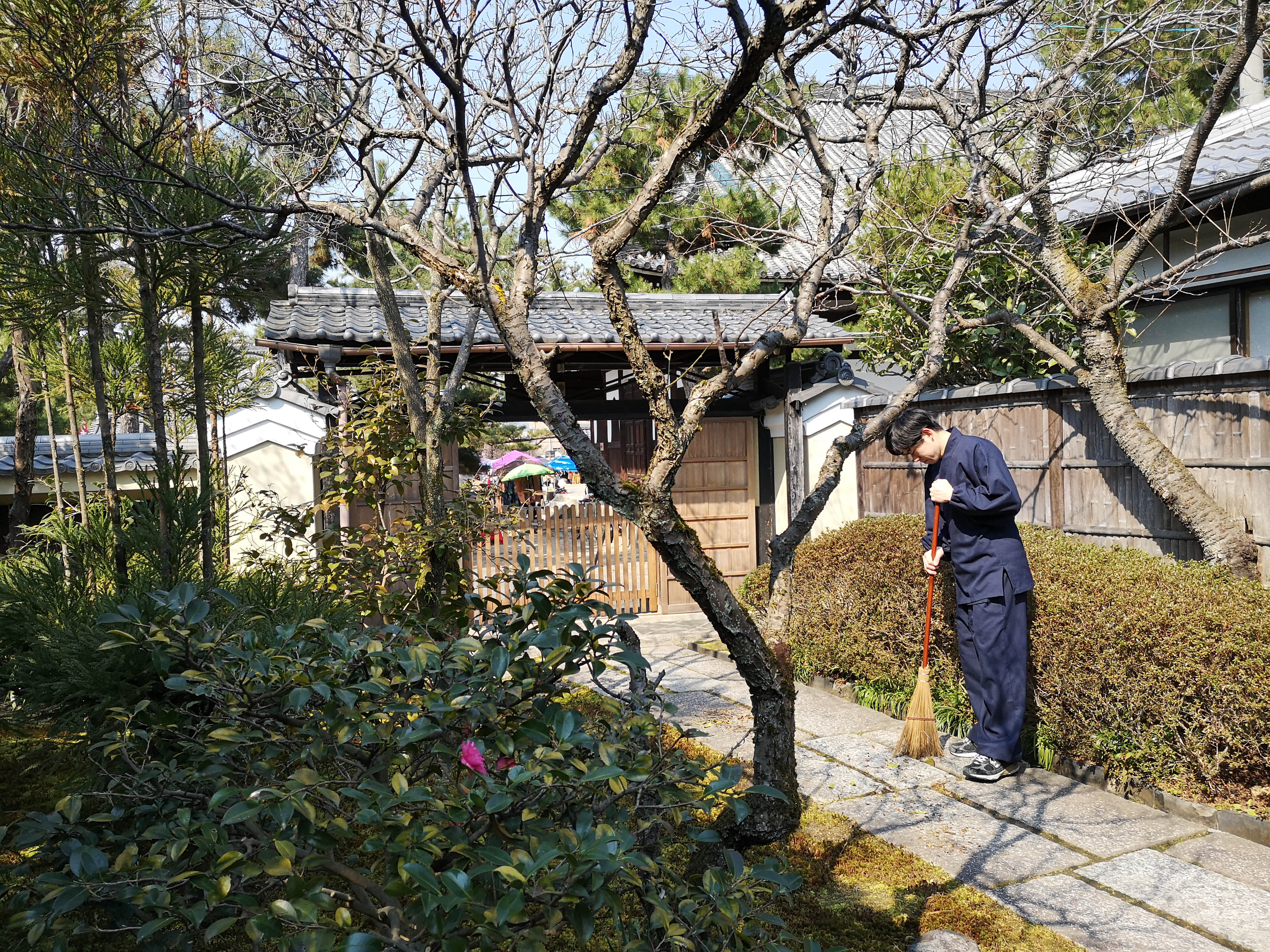
volunteer cleaning in a temple garden in Kyoto
By cleaning one engages in a dialogue between body, mind, and nature.
A simple task - controlled and repetitively performed - allows the mind to wander, eventually bringing once full attention to experiencing the present moment without judgment.

Guillaume brooms leaves of the moss at the garden of Murin-an garden, Kyoto

Birgit removing sediments from stones in the river of Murin-an garden, Kyoto
Changing perspective, leaving the path, moving and re-experiencing nature while reconnecting and finding inner peace.
Cleaning is a mindfulness training that allows us to experience our life as part of a bigger whole.
CLEANING TOOLS
The value of a task is expressed through the design of the tools with which it is being performed.
Cleaning is a mindful activity that functions as a mediator between body, mind, people and the environment. Cleaning tools should be therefore designed with these aspects in mind taking aesthetics, functionality and material lifecycle into account.
During our research residency in Japan, we explored Japanese traditional cleaning tools, which are made from natural materials by hand following hundreds of years old rules and traditions.
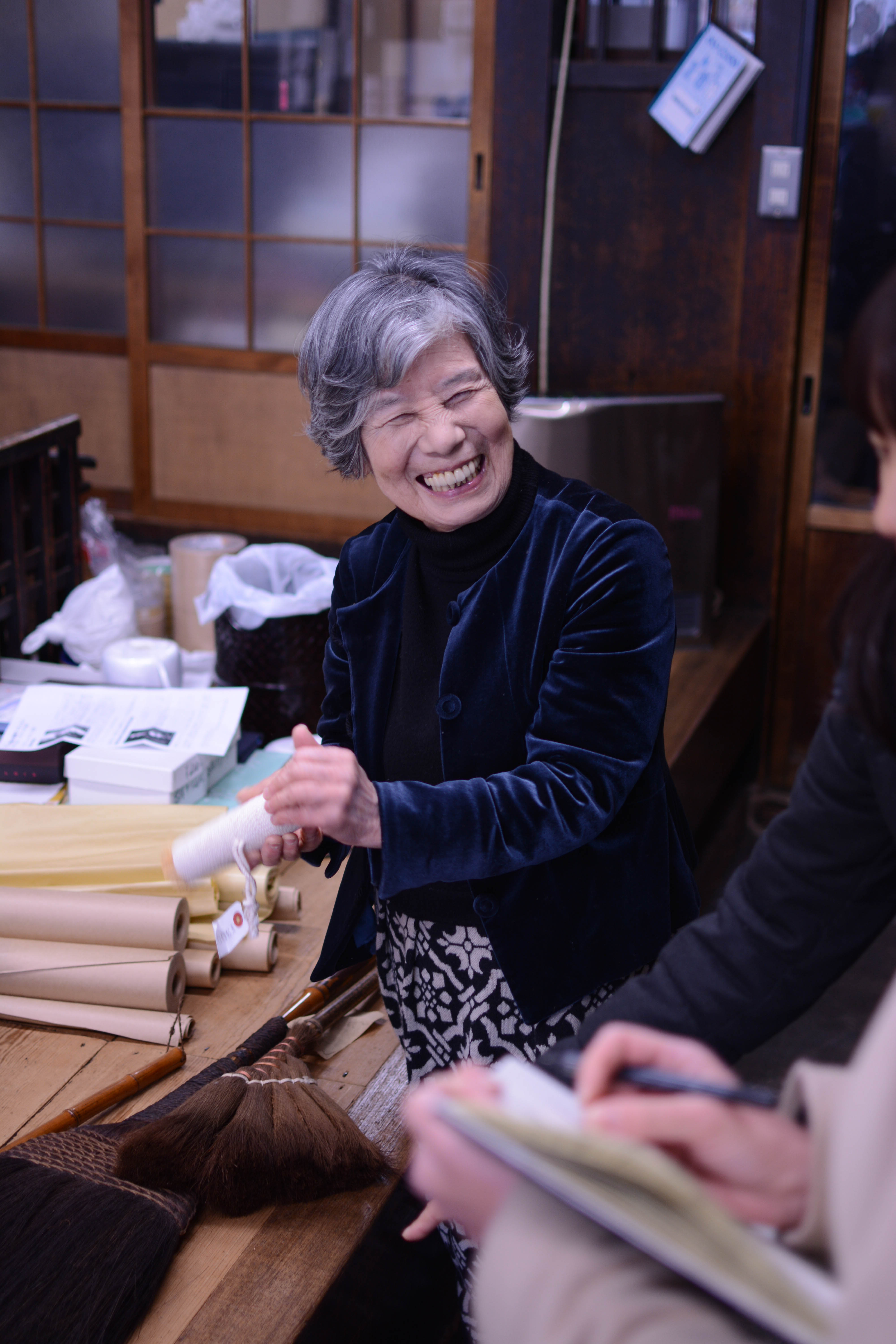
Shop owner of Naito Brush Store, Kyoto. She incarnates the 7th generation at the head of the family-run business.

Different types of „Kiriwara“ Tawashi (キリワラ) made from Shuro (bark of a windmill palm tree) - natural scrab brush

handmade shuro broom

the second generation of shuro broom maker. They exclusively produce for Naito.
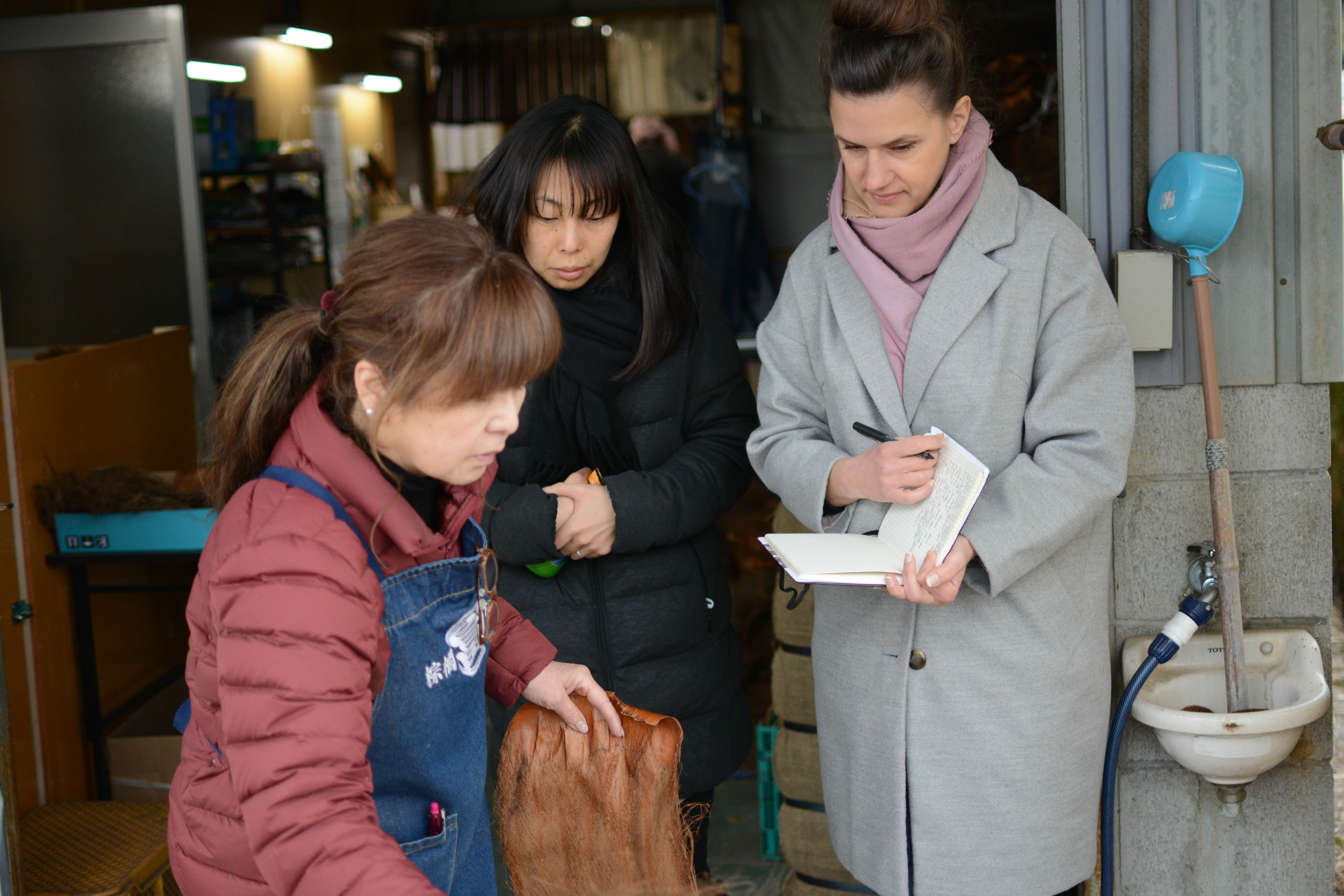
Workshop visit of tawashi manufacturer 中西富一工房.

Tawashis in the making. Made from natural shuro (windmill pall tree bark) they will become brushes for the body or surfaces and vegetables.
___detailed informations on our dedicated research blog
___resulting project KIREI